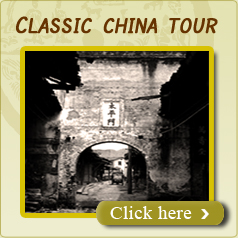Fuzhou Tourism

The coastal location made it one of the first batches of cities in China to benefit from the opening and reform policy. Like in many other cities in the country, nothing can stop the rage of economic growth here.
The capital city of Fujian province in southeast China, Fuzhou boasts a history of around 2,000 years. The city is blessed with mild sub-tropical marine climate, and fantastic resources such as hot springs and seafood.
Fuzhou got the name "city of banyans" during the Northern Song Dynasty (960-1127), and even today, ancient banyan trees with their wide-spreading branches are everywhere to be seen in this sprawling city.
In the heart of downtown Fuzhou, instead of skyscrapers, you will find a huge area of ancient residential buildings, which is a rarity in modern Chinese cities. This area is known as Sanfang-qixiang, namely, three lanes and seven alleys - a critical symbol of Fuzhou as a historic city.
Everywhere you touch upon is history in Sanfang-qixiang. A lot of walls are built with huge bricks and you cannot find it anywhere in modern houses. And if you look closely, you can find seashells, a lot of seashells, because this is a coastal city, they got the material from seaside.
Covering an area of about 40 hectares, Sanfang-qixiang is praised by many architects as the museum of architecture in the Ming and Qing Dynasties. It is said the layout of the lanes and alleys was formed even earlier back in Tang and Song dynasties almost 1000 years ago.
Around a hundred houses built in Ming and Qing dynasties are still in existence. Although, many are in derelict situation.
Most of the houses were built by well-off people such as officials or businessmen at the time. The exquisite wood carvings, stone carvings, and opulent details all testify to the past glory.
This area used to be the upscale neighborhood of Fuzhou at early 20th century. It nurtured many eminent scholars and politicians of the Chinese contemporary history, such as Mr. Yanfu, who introduced the modern western thoughts into China.
Strolling in Sanfang-qixiang is like taking the time machine back to last century. While younger generation just can't wait to move out to enjoy the modern luxury; for older people, their spiritual root is deeply set in this community, and they can find the best pastime here too.
Once a week, retirees put on local opera performance in one of the old houses.
There is a famous food named Yanpi in Fuzhou. For anybody who brags about any knowledge of Fuzhou, you should know about this. This is a special kind of wrap made from pounding pork. With so much efforts putting into it, there is no way that the final product is not delicious.
This small store in Sanfang-qixiang is among the few workshops in Fuzhou that still make Yanpi the traditional way, therefore extremely popular.
So don't you forget to ask for Yanpi when visiting, it will definitely make Fuzhounese relate to you.
To get a better understanding of Fuzhou ancient architecture, you can trek outside of the city proper and find many well-kept old residential compounds in nearby villages. Honglincuo in Minqing County is one of them. (Source: CRI)



